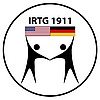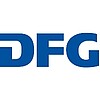A7 (2016 - 2019) – The role of complement in transcriptional Th2 programming of pulmonary dendritic cells in allergic asthma
Under steady state conditions, the lung harbors CD103+, CD11b+conventional DCs (cDCs) and plasmacytoid DCs (pDCs). In addition to cDCs, CD11b+CD64+monocytes residing in the lung can acquire a DC phenotype under inflammatory conditions and present antigens to T cells. After House Dust Mite (HDM) treatment, the pulmonary epithelial cells release inflammatory cytokines like thymic stromal lymphopoietin (TSLP), Granulocyte-Macrophage Colony-Stimulating Factor (GM-CSF), IL-33 and IL-25 (Lambrecht & Hammad, 2014), (Plantinga et al., 2013). But HDM treatment also activates the complement system and generates the anaphylatoxins (AT) C3a and C5a in mice (Köhl et al. J Clin Invest 2006). These ATs exert their biological functions through their cognate G-Protein Coupled Receptors (GPCR), C3a receptor (C3aR), C5aR1 and C5aR2. Importantly, C5aR1 is expressed on CD11b+cDCs (Karsten et al. J. Immunol. 2015). Previously, the Köhl laboratory has shown that targeting or genetic deletion of C5aR1 results in an increased allergic phenotype characterized by strong airway hyperresponsiveness, mucus production and airway inflammation that was associated with strong maladaptive Th2 immune responses (Köhl et al J Clin Invest 2006). This increased allergic phenotype, was associated with a strong increase in CD11b+cDC in the lung of C5aR1-deficient or C5aR1-targeted mice. At this point, it was unclear, how C5aR1 regulates the programming of CD11b+cDCs into a phenotype that activates CD4+ T cells and drives Th2 immune responses in allergic asthma. Therefore, I aimed to delineate the role of C5a/C5aR1 signaling in CD11b+cDC for the activation of CD4+T cells in the sensitization phase of allergic asthma. More precisely, the aims were to: i) functionally and phenotypically characterize the CD11b+cDCs based on the expression of C5aR1 or not and determine the C5/C5a production, ii) reveal at which level signaling through C5aR1 activates pulmonary CD11b+cDCs and shed light on the mechanism behind it.






